Contents
Among the unpretentious annual flowers that bloom all summer until the first frost, kosmeya or cosmos occupies a special place. After all, anyone can grow this flower, even a child. Perhaps he belongs to those rare flowering plants that sometimes suffer more from excessive attention and care than from their lack. Since the most common type of cosmea – double-feathered – is so unpretentious that it can even be found in the wild on the outskirts of villages and summer cottages, where it wandered by self-sowing.
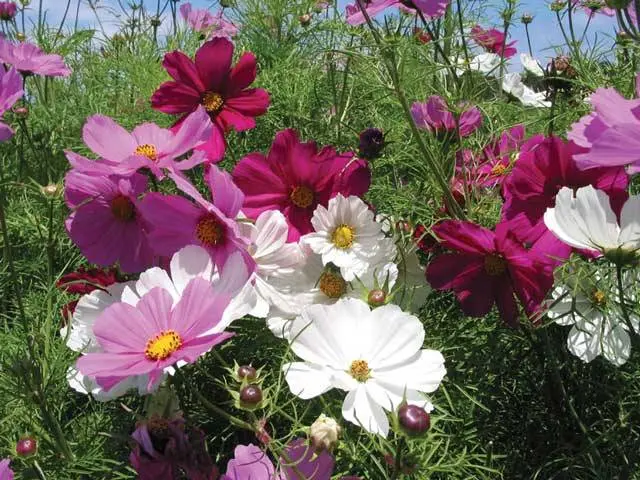
Many probably remember from childhood those old varieties of cosmea, in which small charming flowers flaunted on tall stems, with their delicate petals resembling the wings of elves. To date, many varieties have been bred, including undersized ones, no more than 30-35 cm high, as well as with large flowers reaching 12-15 cm in diameter. In addition to the usual cosmos inflorescences, terry and semi-double varieties have appeared, as well as those that have unusually shaped petals, fused in the form of a single bowl or in the form of separate tubes. Therefore, today, more than ever, its name goes to cosmea, which is translated from Greek as “beautiful”.
The most common types and varieties
The genus Kosmeya belongs to the richest in composition of the Aster family. Of the 25 species of annual and perennial cosmea species that grow naturally in the tropics and subtropics of the American continent, only three species are grown in our country.
Cosmea doubly pinnate
The most famous, popular and unpretentious type of cosmea, which is an annual. Easily propagated by self-seeding. Known in culture since the 19th century.
Among the many varieties of double-pinnate cosmea, many of them are distinguished by high, even gigantic, sizes and reach a height of 80-120 cm.
Radians
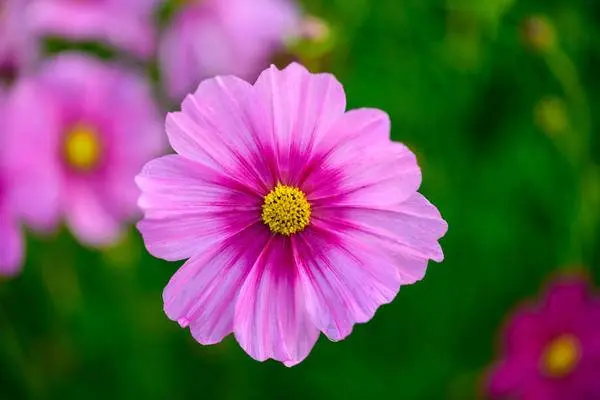
The flowers of this variety seem more magnificent than they actually are, due to the close arrangement of the petals. They also have a very interesting coloration, when the light lilac color at the edges of the petals turns into a darker shade in the center.
dazzler

This variety of cosmea has an interesting feature of changing the color of its flowers over time. From bright red, they turn into crimson after a few days.
Double click
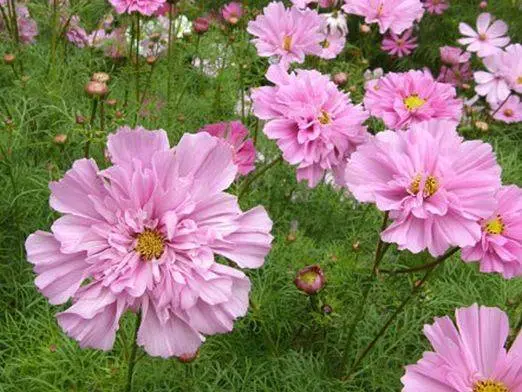
The incomparably beautiful double flowers of cosmea of this variety resemble a rose. The petals have a slight waviness along the edges and are colored with light blotches on the main background.
Full bowl
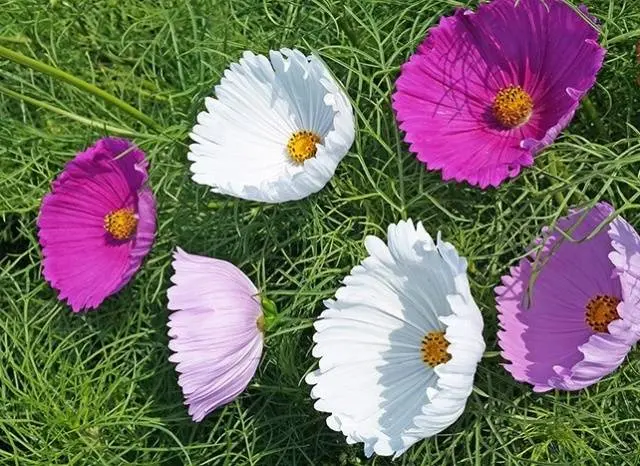
In this variety, the flower petals are so fused along the entire length that the inflorescence resembles a deep bowl. Looks very original.
Seashell
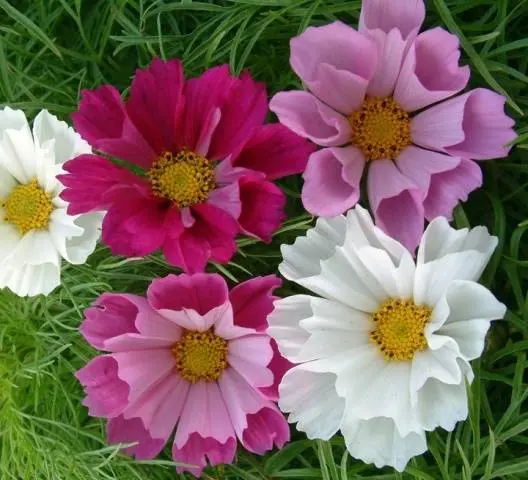
Not only is this variety of cosmea characterized by a variety of shades of inflorescences, but the inflorescences themselves look very original, consisting of petals fused into tubules.
In recent years, low-growing varieties of cosmea have been especially popular among flower growers. Probably because they look as attractive as their tall counterparts, but at the same time they do not suffer from the wind and do not need a garter.
Sonata
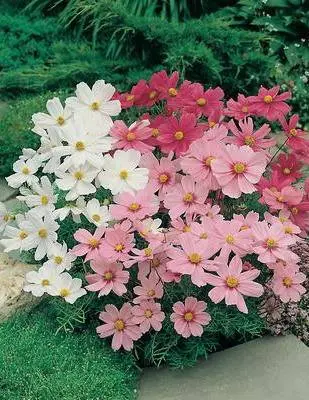
This variety is especially popular because its seeds are sold not in the form of mixtures, but in varieties with flowers of several shades: white, pink, red and crimson. Therefore, using these colors, you can create your own color compositions. The bushes are very branched, with large inflorescences. In height, plants of the Sonata cosmea variety grow from 40 to 60 cm.
Vega

It is a dwarf variety of cosmea with flowers of different colors in the mixture. Plants do not exceed 30 cm in height.
Cosmea sulfur yellow
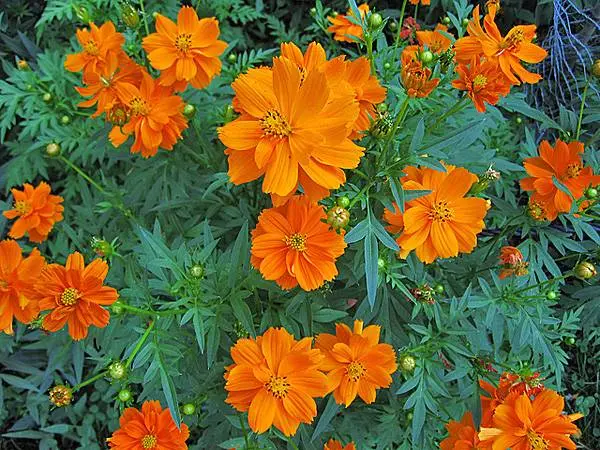
For some reason, this type of cosmea is much less popular. Perhaps this happened due to the greater thermophilicity of the sulfur-yellow cosmea. In the northern regions of our country, it hardly tolerates cloudy and rainy weather with constant winds. It is characterized by smaller inflorescences up to 6-8 cm in diameter and mostly yellow or orange hues. It differs from the previous species in wider leaf blades, pointed at the ends.
Cosmea blood red or chocolate
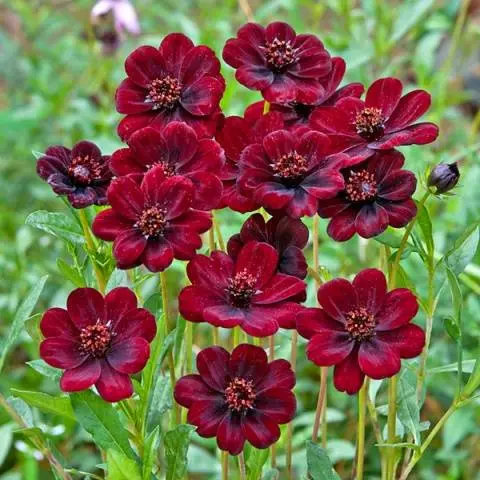
This type of cosmea has recently appeared in our country. It is sometimes even called black cosmea, because the velvet petals are so dark red that it almost looks black.
Plants are perennials, but they are so thermophilic and cannot tolerate excess moisture that their flowering in open ground can only be observed in the southern regions of Our Country. In the middle lane, chocolate cosmea is best grown in flowerpots or containers. It works well in room culture, especially since it is easily propagated by tubers and cuttings.
Seeding for seedlings
Given the cold resistance of the most popular varieties of cosmea and their ability to withstand even small frosts, seeds are often sown in open ground. But the problem is that the period from germination to flowering is about 2,5 months for cosmea. Even if you sow it as early as possible, for example, in late April – early May (in the middle lane), then you can admire the flowering of cosmos not earlier than mid-July. And many people want to have beautiful flower beds from the very beginning of summer. In this case, you will have to sow the seeds at home in small containers – that is, first grow seedlings of cosmea, which in the second half of May can be successfully planted in flower beds and in mixborders.

It is difficult to name the exact dates when planting seedlings for seedlings, since a lot depends on the climatic conditions of your region. For example, in the south it can be sown already in March, in order to be planted in flower beds in April. And for most areas of the middle lane, April will be the best month for sowing cosmos for seedlings.
For sowing, you can take almost any universal soil, although cosmea seeds germinate best in light and loose soil with a significant sand content.
The germination of seeds of cosmea lasts about 5 years. The seeds are medium in size (1-150 pieces are contained in 200 gram) and have a slightly elongated shape, but it is not recommended to plant them vertically.
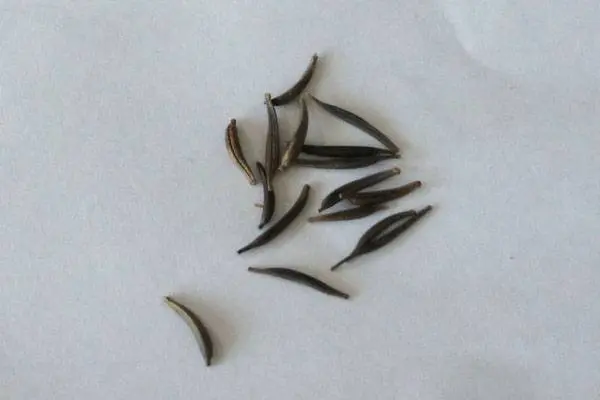
The best way to plant is to scatter the seeds over the surface of the ground in a container so that they lie horizontally, and moisten well from above to ensure good traction with the ground.
After sowing, the container is closed with a bag or any transparent lid to form greenhouse conditions and placed in a moderately warm place. Cosmea seeds germinate well even at +15°+18°C, so they do not need special heat, but they do need light. You can put the seed container on a regular cool windowsill.
Shoots usually appear, depending on the freshness of the seeds, after 8-14 days.
Cosmea tolerates transplanting and picking perfectly, so when the first two true openwork leaves open in young sprouts, they can be planted in separate cups.
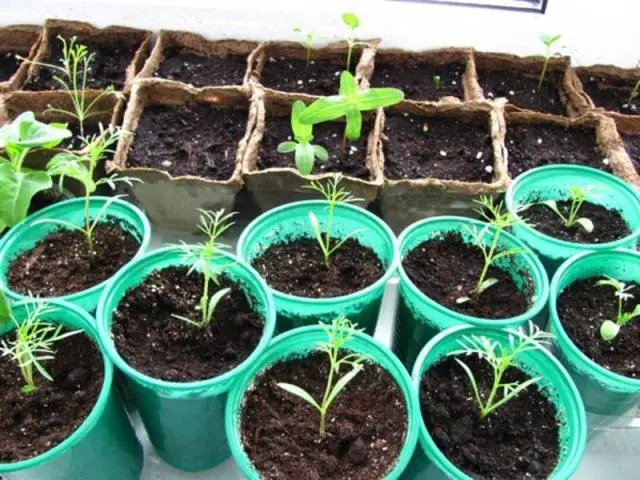
If you grow tall varieties of cosmea, then when they form 5-7 leaves, it is advisable to pinch the tops of the plants for lush branching. Although the pinching procedure may somewhat delay the flowering of the bushes.
Cosmea seedlings can be planted outdoors, after hardening, even when there is still a threat of small return frosts. But the average temperatures during the day should be around +10°C. A distance of about 30 cm is usually left between the bushes. But practice shows that it is optimal to plant cosmea in small groups of 3-5 plants. In this case, flowering can be more abundant and the plants feel better.
Seedless cultivation of cosmos
Cosmea seeds are usually sown on flowerbeds in a nested way, that is, several pieces are placed in one hole at once. Seeds should not be sprinkled with earth, as well as when sowing seedlings. True, when sowing outdoors, winds and rains should be taken into account, so it is advisable to press the seeds well into the ground.
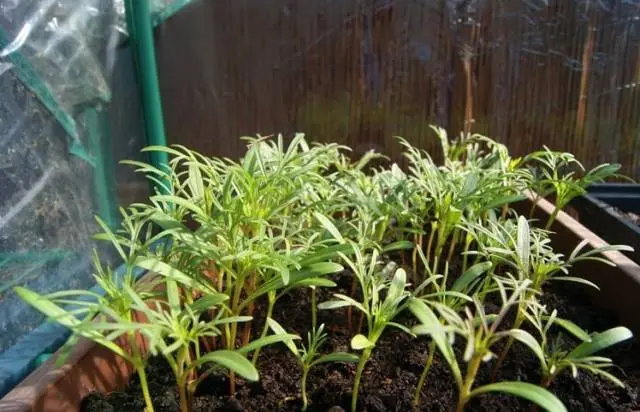
The nesting method is perfect for sowing cosmos, as it has been noticed that with a denser planting, the plants form more peduncles. While if planted infrequently, they will form a lot of luxurious green mass, but flowering will be rather scarce.
A similar effect can be obtained by planting cosmea in the shade or overdoing it with organic or nitrogen fertilizers. In this case, it is difficult to hope for anything other than magnificent openwork leaves.
Abundant flowering can be expected only when planting any kind of cosmea in the sun and on moderately fertilized, not wet soils.
Therefore, it needs good watering only during the first month of development. After flowering, it is better to limit watering to a minimum, no more than once a week, especially if the weather is cloudy or rainy.
Interestingly, kosmeya reproduces well by self-sowing, so its seeds can be sown before winter. Usually this is done in late autumn, after the first snow falls. True, in regions where thaws are not uncommon in winter, winter sowing will give flowers a little chance of survival.

Cosmos care and use
Caring for cosmea is so simple that we can say that excessive attention can only harm it, and instead of flowers, you will get only an abundance of openwork greenery.
For top dressing, it is better to use complex fertilizers with a minimum nitrogen content. For the first time, cosmos can be fed a few days after planting the seedlings in the ground. Then it can be lightly treated during the period of bud formation and the last time – at the height of flowering.
The undoubted advantage of cosmea is also the fact that most pests and diseases bypass it. Therefore, it does not need any additional processing.
True, it is advisable to tie tall bushes to supports, otherwise thin stems will not withstand the pressure of the winds and will bend.
Cosmea flowers stand well in vases. If you cut them while still half-opened, they can decorate your home for a week or more.
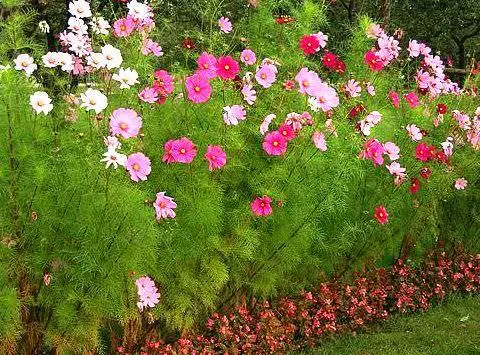
And cosmea, especially tall varieties, can be cut. The result is a beautifully shaped and graceful flower hedge.
Observing all the simple rules for planting and caring for this unpretentious flower, you have the opportunity to enjoy its flowering all summer, and even autumn, right up to real frosts.









